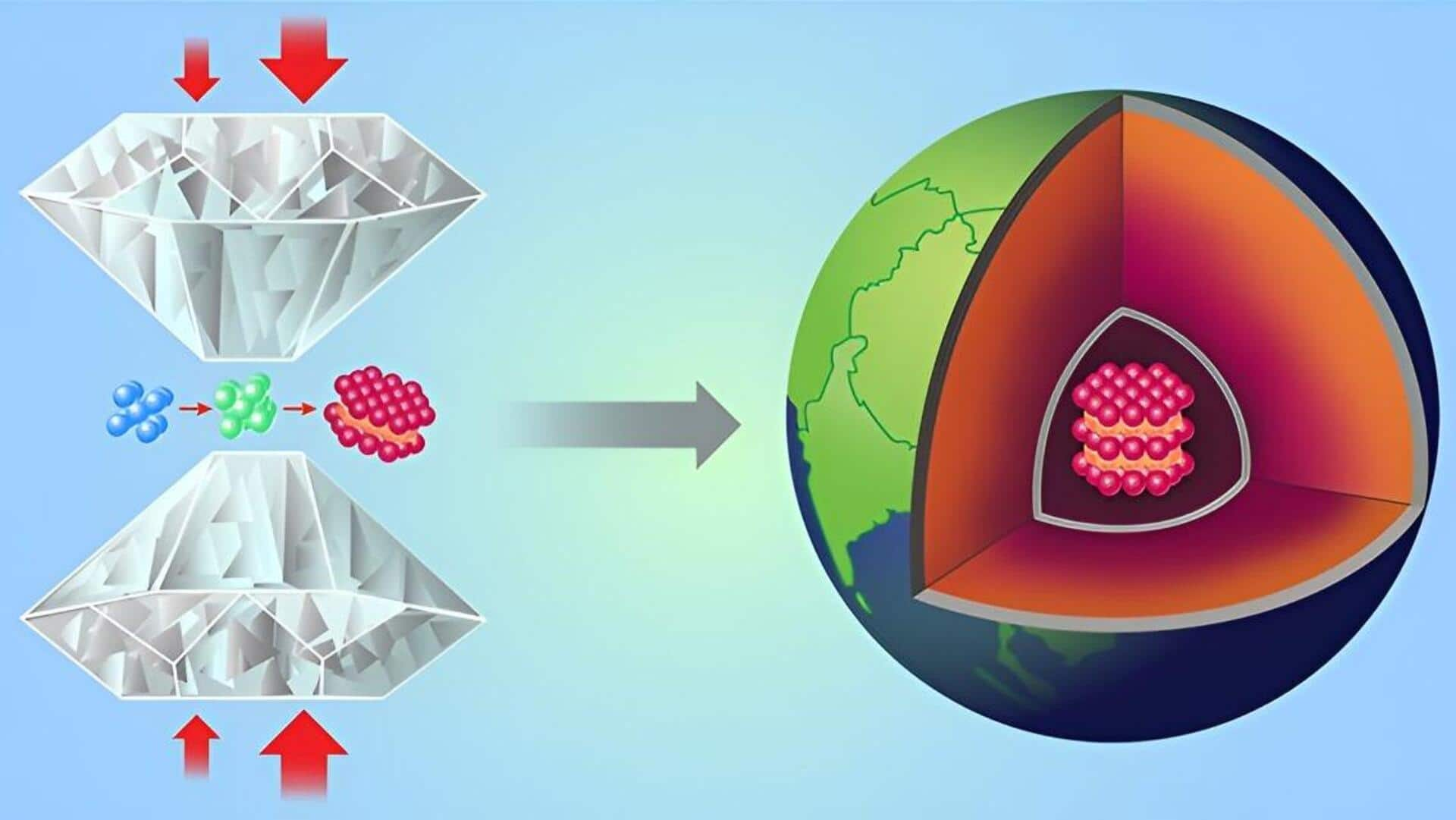
Physicists synthesize iron in the form found in Earth's core
What's the story
Researchers at CEA DAM-DIF and Université Paris-Saclay have achieved a significant breakthrough by successfully synthesizing single-crystalline ε-Fe or epsilon iron, a form of iron believed to exist in Earth's core. Epsilon iron is basically a hexagonal close-packed (HCP) phase of the metal, stable only at extremely high pressure. The development could greatly enhance our understanding of the structure and composition of our planet's core.
Details
Challenges faced in synthesizing ε-Fe
Scientists faced challenges in synthesizing ε-Fe due to fracturing during the process. When an atmospheric pressure phase of iron-ferrite or α-iron is subjected to high pressure in order to crush it into ε-Fe, it usually fractures into tiny crystals that are not appropriate for a comprehensive examination. However, the research team overcame these obstacles by employing an innovative experimental approach.
Process
This is how the groundbreaking synthesis was done
According to the study, scientists compressed α-iron at 7GPa (gigapascals), causing temperature to rise around 527-degree Celsius, and leading to transformation into γ-iron crystals. While γ-iron has a different structure to α-iron, crystals were eventually changed to ε-structure iron or hexaferrum phase, by applying pressures between 15-33GPa at 26.85-degree Celsius. A synchrotron beamline was then used to analyze the properties of ε-Fe.
Scenario
Implications for geophysics and beyond
The experiment was conducted to study the directionally-dependent elasticity of synthesized ε-iron, and the discovery suggests that its behavior closely resembled iron in Earth's core. Scientists believe that the majority of the iron in Earth's core is in this form, and a detailed understanding of synthesized ε-iron's properties could aid in explaining why our planet's center appears to have directional variations in texture.